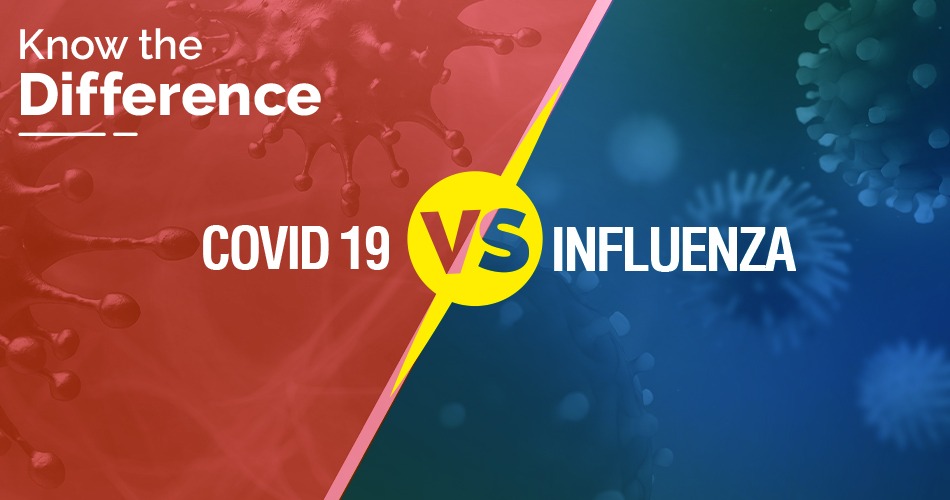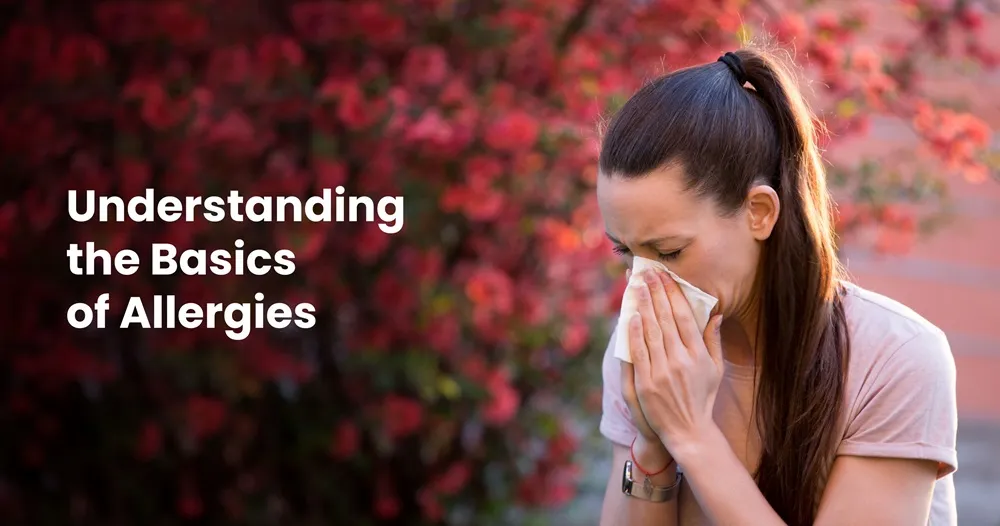Covid 19 VS Influenza: How to Differentiate Between the Two
May 02, 2023

Covid 19 and influenza have many similarities, making it difficult to distinguish between the two. Both viruses cause respiratory diseases characterised by fever, coughing, and muscle aches. However, several crucial distinctions might assist you in determining which ailment you may be suffering from.
Transmission
Respiratory droplets serve as the medium for the transmission of both COVID-19 and influenza, albeit COVID-19 possesses higher levels of contagiousness. COVID-19 is mostly spread through direct contact with an infected person or by coming into contact with contaminated surfaces, whereas the main mode of transmission for influenza is through airborne particles. It has been demonstrated that COVID-19 is more transmissible as a result of elevated levels of viral particles within the respiratory secretions of those who are infected.
Symptoms
Covid 19 is a novel coronavirus, implying that it is a new virus that has not been previously identified. Influenza, on the other hand, is a virus that causes an annual outbreak of respiratory illness. In terms of symptoms, Covid 19 and influenza can both cause fever, coughing, and difficulty breathing. However, Covid 19 is more likely to cause severe symptoms.
Severity
While both illnesses can cause serious illness and death, COVID-19 is generally considered more severe. COVID-19 is associated with a higher rate of hospitalization, ICU admission, and death compared to influenza. Furthermore, COVID-19 has been shown to have more long-term effects, such as lung damage and neurological symptoms, than influenza. COVID-19 has also been shown to affect a broader age range, with a higher risk for severe disease in older adults and those with underlying health conditions.
higher rate of hospitalization, ICU admission, and death compared to influenza. Furthermore, COVID-19 has been shown to have more long-term effects, such as lung damage and neurological symptoms, than influenza. COVID-19 has also been shown to affect a broader age range, with a higher risk for severe disease in older adults and those with underlying health conditions.
Vaccination
The accessibility of vaccinations sets COVID-19 apart from influenza as one of the most notable differences. Although influenza vaccines are accessible, there was no immunization specifically for COVID-19 at the onset of the global outbreak. Luckily, several COVID-19 vaccines have been created and given the green light for emergency usage, providing a potent solution to avoid serious illness and hospitalisation. There is strong evidence demonstrating the remarkable effectiveness of vaccines in preventing COVID-19 infections, lessening the severity of symptoms, and consequently diminishing the likelihood of spreading the virus.
Treatment
The treatment options for COVID-19 and influenza differ as well. While both illnesses are treated with antiviral medications, the treatment for COVID-19 has evolved. In the early days of the pandemic, treatment mainly focused on managing symptoms and providing supportive care. However, with the availability of vaccines, treatment options for COVID-19 have expanded. Currently, treatment for COVID-19 may involve a combination of antiviral medications, anti-inflammatory drugs, and oxygen therapy.
Prevention
Preventing the spread of COVID-19 and influenza requires similar measures, such as frequent hand washing, wearing masks, and avoiding close contact with infected individuals. However, due to the high transmissibility of COVID-19, additional measures such as social distancing and quarantine have been necessary. Contact tracing has also been essential in controlling the spread of COVID-19. Additionally, widespread vaccination has been critical in reducing COVID-19 transmission.
Concluding Note
COVID-19 and influenza share similarities in terms of transmission and preventative measures, but they differ significantly in terms of severity, vaccination, and treatment options. While influenza has been a familiar illness for centuries, COVID-19 has demonstrated the need for ongoing research and innovation in the face of emerging infectious diseases. The development of COVID-19 vaccines and treatments has provided hope for controlling the pandemic and reducing its long-term effects.
Related Blog Post
- A guide to sleep better during the COVID-19 pandemic - Apollo Diagnostics
- Time is up For Corona - Keep your Health Pristine, Get the Vaccine!
- Testing for COVID-19? Here’s something you should know
- Got vaccinated? Here’s what you should know.
- Home care tips to fight COVID-19
- How effective is the vaccine against Omicron? Should I get the booster shot? Visit our blog to know the importance of getting fully vaccinated.
Blog Categories
- Child Health
- Mens Health
- Women's Health
- Mental Health
- Health Myths & Facts
- Fitness
- Nutrition/Recipes
- Remedies
- Weight Management
- Stress Management
- Health Supplements
- Addiction Management
- Disease Management
- Allergy
- Anemia
- Arthritis
- Asthma
- Autoimmune Diseases
- Blood Pressure
- Cancer
- Deficiencies
- Dengue/Malaria/Chikungunya
- Diabetes
- Eye Problems
- Heart Diseases
- Hepatitis
- HIV/AIDS/STD
- Hormonal Imbalance
- Infection/Flu/Viral
- Kidney
- Liver
- Menstrual Problems
- Pregnancy
- Skin & Hair Problems
- Stomach Ailments
- Thyroid
- Others
- Health Checkups
- Diagnostics/Pathology
- Lifestyle & Wellness
- Covid
- Medical Tests
- Cholesterol
- Health Tips
- Parent Care/Old Age
- Lungs
- Food Intolerance








